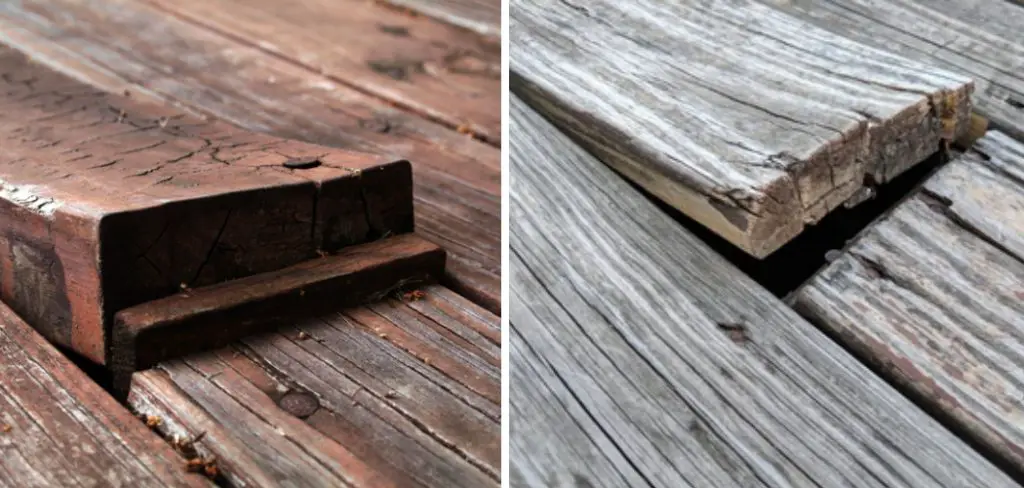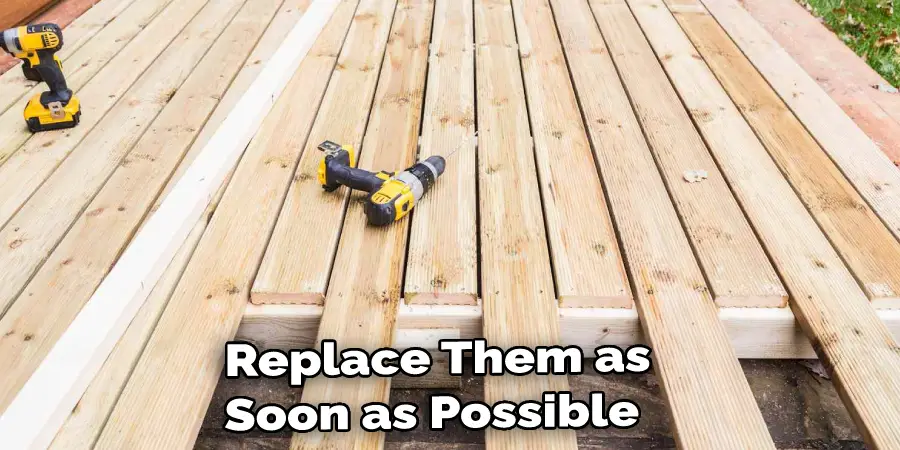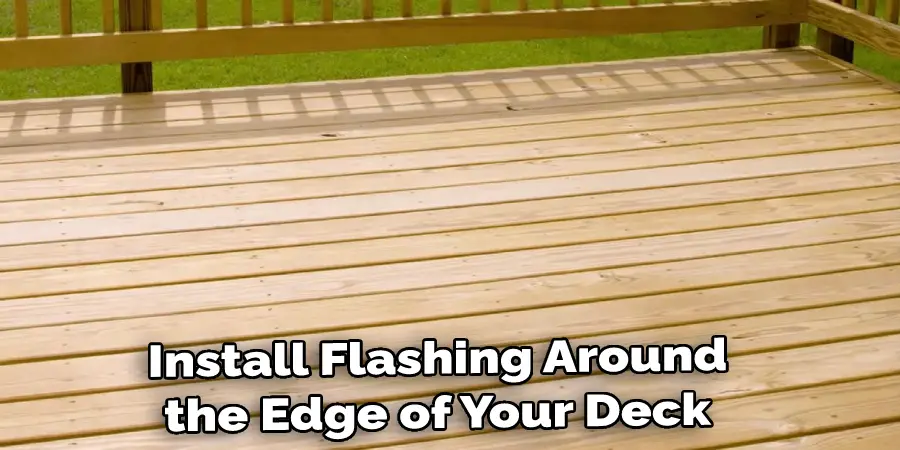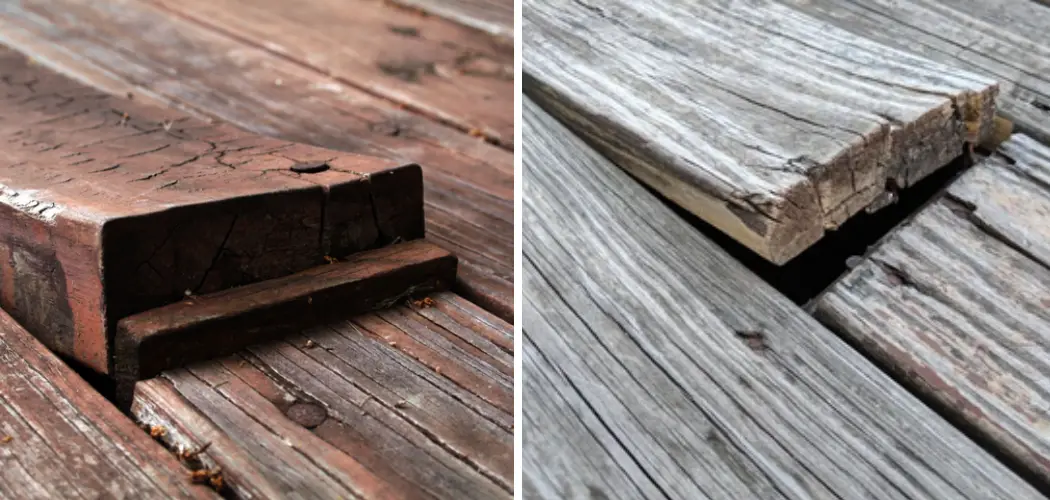Deck boards can become warped over time due to exposure to moisture and extreme temperatures. Warped deck boards are not only unsightly, but they can also pose a slip hazard and make it difficult for you to maintain your deck properly. It is important to know how to keep your deck boards from warping to ensure that your deck stays in top shape.

One of the major benefits of learning to keep deck boards from warping is that it can help preserve the integrity and lifespan of your deck. Warped boards can become weak or unstable, making them a safety hazard for both guests and homeowners alike. By taking steps to prevent or reverse the warp, you can maximize the life of your deck and make sure it looks great for years to come. In this blog post, You will learn in detail how to keep deck boards from warping.
Step by Step Processes for How to Keep Deck Boards From Warping
Step 1: Inspect the Deck
Before you can start any repair work, it’s important to inspect your deck and determine what type of damage has occurred. Look for signs of warping, cracking, splintering, or discoloration that could be caused by moisture or sun exposure.
Step 2: Clean the Deck & Seal the Cracks
Next, give the deck a thorough cleaning to remove any accumulated dirt and debris on the surface. Once you’ve cleaned it, review each board carefully to look for any chips or cracks that need to be sealed. Use an appropriate sealant product to fill in any gaps and keep out moisture.
Step 3: Protect Against Moisture
Once the deck is clean and cracks are sealed, it’s time to focus on preventing moisture from getting in. Use a good waterproof sealant spray or stain to protect the wood against water damage. To keep your deck boards from warping, ensure the deck drains properly. Inspect the area and ensure no clogged drains or standing water accumulating on the boards.

Step 4: Consider Anti-Warp Technology
If you’re looking for a more permanent solution, consider using products with anti-warp technology. These types of products are designed to help seal the wood and keep it from warping or cracking. Standing water and debris can cause damage over time, so make sure to remove any excess moisture on your deck boards as soon as possible. If you’re using a pressure washer, be careful not to use too much pressure, as this can cause warping.
Step 5: Cover in Sun & Rain
If your deck is exposed to direct sunlight or heavy rain, consider covering it with a tarp or other protective covering when possible. This will help protect the deck boards from excessive moisture and UV damage that can contribute to warping.
Step 6: Replace Damaged Boards
If any of your deck boards are warped or splintered, it’s important to replace them as soon as possible. Unattended damaged boards can make the entire deck less stable and increase the risk of injury. Make it a habit to inspect your deck regularly for signs of damage or warping. This will help you catch any damage early and take action as soon as possible to prevent further issues.

Step 7: Maintain Properly
Finally, follow the manufacturer’s instructions for proper maintenance of your deck boards. This includes regularly cleaning, sealing, and staining the deck to keep it in good condition and decrease the risk of warping. These steps will ensure that your deck boards stay safe and stable for years.
By following these tips on keeping deck boards from warping, you’ll be able to protect your deck from water damage, UV damage, and other factors that can cause warping.
Tips for How to Keep Deck Boards From Warping
- Inspect your deck regularly for warped boards and signs of rot, such as discoloration or soft spots on the wood. Replace any boards that show these signs to prevent further damage and reduce the risk of warping.
- Keep your deck well-maintained; clean it regularly with a pressure washer, stain or seal it, and ensure there are no cracks or other damage.
- Install joist hangers to reinforce the frame of your deck, which will help keep the boards from warping due to weather changes or other factors.
- Avoid using nails when fastening the boards together; instead, use screws so that they don’t loosen over time.
- Ensure the boards are properly spaced for optimal airflow and drainage; improper spacing can lead to warping or rot.
- Choose a wood type that is resistant to warping, such as cedar or redwood, which both have natural properties that make them more stable in humid climates.
- Install flashing around the edge of your deck to help prevent water from getting underneath and causing warping. This will help keep your boards in good condition for longer.

By following these tips, you can ensure that your deck boards stay securely fastened and remain free from warping.
What Are the Most Common Causes of Warping in Deck Boards?
Warping in deck boards is most commonly caused by moisture exposure and temperature fluctuations. When wood absorbs moisture, it expands, causing warping. This can happen when the wood is exposed to rain or snow or when there is a high level of humidity.
Extreme temperatures also play a role in warping, as heat causes expansion, while cold causes contraction—the expansion and contraction cause boards to bend or warp, resulting in an uneven surface.
Another common cause of warping is poor installation techniques, such as not pre-drilling holes for screws correctly or using the wrong type of fasteners. Improper spacing between boards can also lead to warping over time. If there isn’t enough space between the boards, it can cause them to rub together and warp.

How Can You Minimize Moisture Exposure to Your Deck Boards to Prevent Warping?
The most important factor in preventing the warping or cupping of wood deck boards is to minimize the amount of moisture exposure and fluctuations that your deck boards experience. To do this, you should:
- Use Pressure-treated Lumber: Pressure-treated lumber is treated with chemicals that help it resist rot, mold, and termite damage. It also makes the wood more resistant to moisture and therefore warping.
- Install Your Deck Boards With Appropriate Spacing: When you install your deck boards, you should use a gap of 1/8 inch or larger between each board. This allows for air circulation and allows any moisture that does get on your boards to evaporate quickly.
- Apply a Waterproof Sealant: A waterproof sealant will help protect your deck boards from moisture and other damage. It’s important to remember that you should re-apply the sealant every year or two to ensure it is still protecting your deck boards from warping.
- Keep Your Deck Clean: Make sure to remove any debris or standing water from your deck regularly. This will help prevent moisture build-up and keep your deck boards safe from warping.
Following these guidelines can go a long way in helping to protect your deck boards and prevent them from warping due to moisture exposure. Properly installing, protecting, and maintaining your deck is essential for ensuring a safe and long-lasting outdoor area.
Are There Any Maintenance Steps You Need to Take to Prevent Warping in Your Deck Boards?
Naturally, the best way to keep your deck boards from warping is to maintain them properly. Some steps you can take to prevent Warpage include:
- Clean and Inspect Regularly: Regularly cleaning and inspecting your deck boards helps identify any potential issues before they become major problems. Pay particular attention to areas that are in direct sunlight or are exposed to elements such as rain and wind.
- Keep Deck Boards Dry: Warpage is often caused by moisture, so keeping your deck free of water buildup is important. Use sealants and other waterproofing materials on your deck boards to help keep them dry if possible.
- Be Mindful of Temperature Changes: Temperature changes can cause your deck boards to expand and contract, leading to warpage. When cleaning or treating your deck, try to avoid extreme temperatures, such as hot summer days and freezing winter nights.
- Securely Install Your Boards: Improper installation can lead to warping, so it’s important to secure your deck boards properly when installing them. Make sure to follow any installation instructions for the type of material you’re using and use the right hardware and fasteners for the job.
By following these steps, you can help minimize warping in your deck boards and keep your outdoor space looking great for years to come.
Conclusion
One of the disadvantages of trying to keep deck boards from warping is that it increases the cost of your project. Warped boards are more costly to purchase and replace, as they require specialized hardware for installation. Warping can also decrease the aesthetic appeal of your deck, making it look uneven or lumpy.
In conclusion, warping can be a major problem when it comes to deck boards. Luckily, there are ways to prevent and minimize the risk of warping. A few methods include ensuring that the boards are properly sealed and fastened, using properly treated wood, spacing out the boards, allowing for drainage and air circulation, avoiding direct sunlight exposure, and protecting them from moisture.
I hope this article has been beneficial for learning how to keep deck boards from warping. Make Sure the precautionary measures are followed chronologically.

